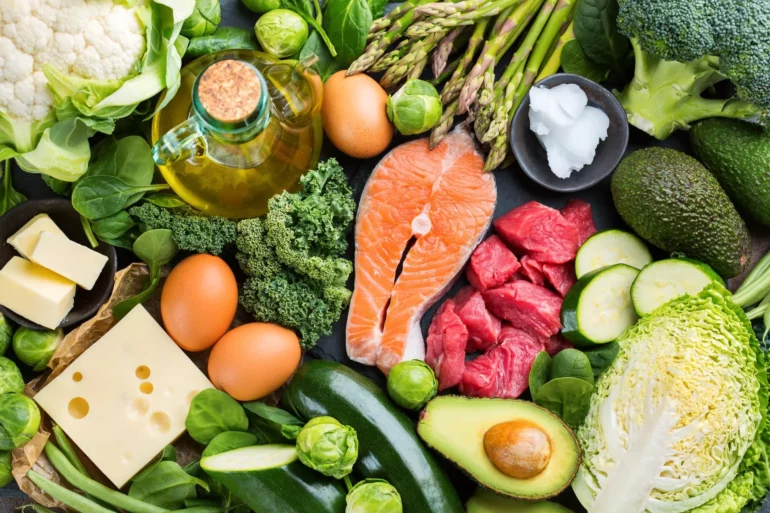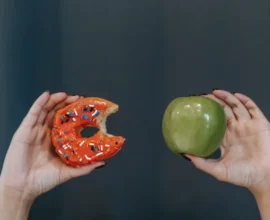It’s a myth that carbs are the enemy of modern diet culture. Carbohydrates are an extremely crucial segment of most diets. Rather, complex carbs that are derived from whole, unprocessed plant foods are usually full of nutrients.
However, in a few circumstances, it could be quite beneficial for your health if you can cut back on carbohydrates. This is particularly true when it comes to simple carbs, which are derived from highly processed foods and don’t provide extra nutrients.
Research has revealed that low-carb diets may help with weight loss and better management of diabetes or prediabetes among adults with higher body weights.
Whenever your nutritionist or doctor has advised you to lessen your carbohydrate intake as part of a healthier lifestyle overhaul, generally including other aspects such as physical activity, in this article we’ve identified six simple tips to reduce carbs.
- Curb Your intake of Refined Grain Bread
There are several categories of bread, particularly whole grain bread, containing vitamins and minerals. Unrefined whole-grain bread is also considered a complex carb. So, it takes longer to digest and gradually impacts blood sugar, rather than all at once.
Though bread made with refined grains, such as white bread, isn’t always higher in carbs compared to whole grain bread, the process of refining the grains can minimize the micronutrient and fiber content of the bread.
Without much fiber, the sugar and carbs in the bread are processed faster in the body, causing blood sugar spikes. Over time, this may lead to the development of type 2 diabetes.
So, you should stick with a moderate amount of whole-grain bread, or cut down your daily intake of bread
- Reduce Your Intake of Sugar-sweetened Drinks
Maximum sugar, whether it’s lactose, fructose, sucrose, maltose, or glucose, is considered a simple carbohydrate. By providing quick energy, simple carbs lead to a rapid rise in blood sugar levels and insulin secretion from your pancreas.
Having sugar-sweetened drinks such as sodas or sweetened iced teas may include a lot of additional carbs, in the form of sugar, to your diet.
For example, a can of 12 fluid ounces of non-diet cola contains 35 grams of carbs, and a small sweetened iced tea drink contains 29.5 grams of carbs. These carbs are almost entirely available from sugar.
Frequent consumption of sugar-sweetened beverages is linked with the onset of type 2 diabetes. That’s why cutting back on these drinks could minimize your risk of the condition.
Whenever you crave something refreshing, flavored seltzers are an amazing alternative.
- Prefer Lower-carb Snacks
Carbs can add up faster in snack foods like pretzels, chips, and crackers as salty, savory snacks are generally low in protein and fiber, the two macronutrients responsible for that full feeling.
Accordingly, you may end up consuming much more than your initial plan. You can feel more satisfied by incorporating extra low-carb snacks with a good serving of protein and fiber.
Whenever you seek some ideas, cheese, nuts, and eggs could be lower in carbs and higher in protein. There are multiple low-carb snack roundups around the web to spark your creativity
- Consider Fruit Juice
Unlike whole fruit, fruit juice hardly contains any fiber and is generally rich in fructose, a form of fruit sugar that is also considered a simple carb.
Despite providing some vitamins and minerals, fruit juice is almost like sugar-sweetened beverages, such as soda in terms of sugar and carbs.
For example, a bottle containing almost 10 fluid ounces of 100% apple juice contains 35 grams of carbs, whose maximum content is sugar.
Whenever you seek consumption of fewer carbs, opt for a piece of fruit rather than fruit juice. Generally, whole fruit is just as sweet, and its fiber content may help ease blood sugar spikes for people fighting diabetes.
- Utilize Sugar Alternatives
Though a lot of people enjoy sweetening their coffee or tea with sugar, it may add excess carbs.
Despite honey being a more natural sweetener, it’s pure sugar as well. A tablespoon contains 17 grams of carbs, all from sugar.
If you wish to sweeten your coffee, many sugar alternatives seem to be low in sugar or even sugar-free:
- Erythritol is a type of sugar alcohol, that tastes like sugar, but doesn’t raise blood sugar or insulin levels. It may help prevention of cavities by killing plaque-causing bacteria.
- Stevia is derived from the stevia plant that originated in South America. A few studies have revealed that stevia may have a potential blood glucose-lowering effect among diabetic patients.
- Xylitol is another sugar alcohol, that helps to fight the bacteria causing tooth decay. Moreover, studies reveal that it is effective for blood sugar management.
- Begin Your Day with Eggs or Other Lower-carb Breakfast Foods
Even if they appear healthy initially, breakfast foods can have hidden amounts of carbs and sugar.
For example, a cup of store-bought granola can nearly contain 68 grams of carbs, and a cup of Raisin Bran cereal can have almost 46 grams.
Though they may also contain vitamins and fiber, breakfast cereals can be heavy on simple carbs because of extra sugar. Long-term consumption of foods containing extra sugar may cause blood sugar spikes among diabetic people.
Whenever you seek options containing fewer simple carbs, consider including more eggs in your morning routine.
An egg contains less than 1 gram of carbs. They are also an amazing source of high-quality protein to help you feel fuller and longer and possibly eat less throughout the rest of the day.
It has been proved that due to their versatility, eggs can be prepared in several ways, including hard boiling for an on-the-go breakfast.
A few other examples of low-carb breakfast ideas are crustless quiche, low-sugar yogurt, nut butter on celery sticks or low-carb bread, and a breakfast skillet with potatoes and vegetables.
Conclusion:- There could be many other tips to reduce carbon intake. However, for immediate results, you may start with the above-mentioned suggestions.



